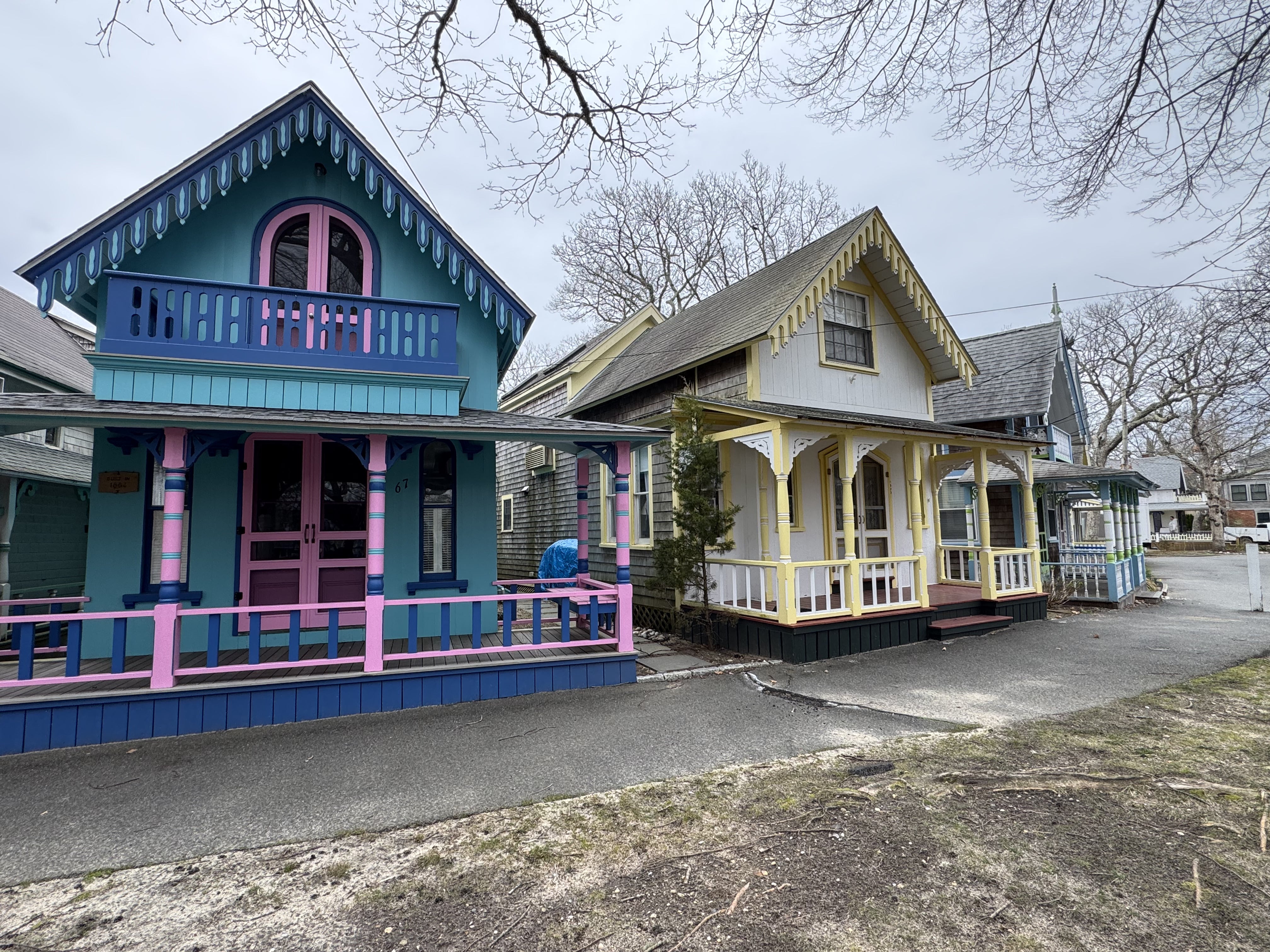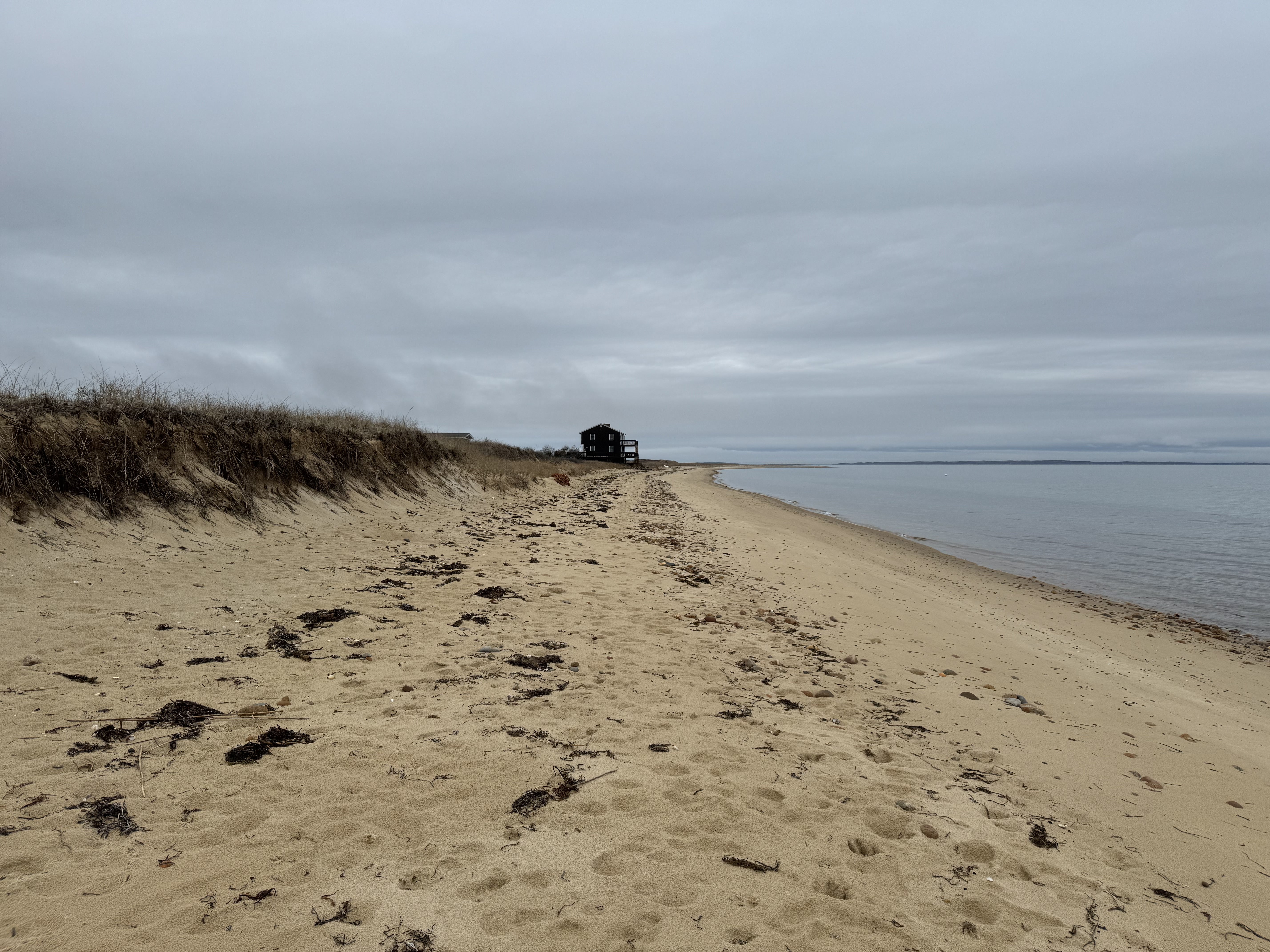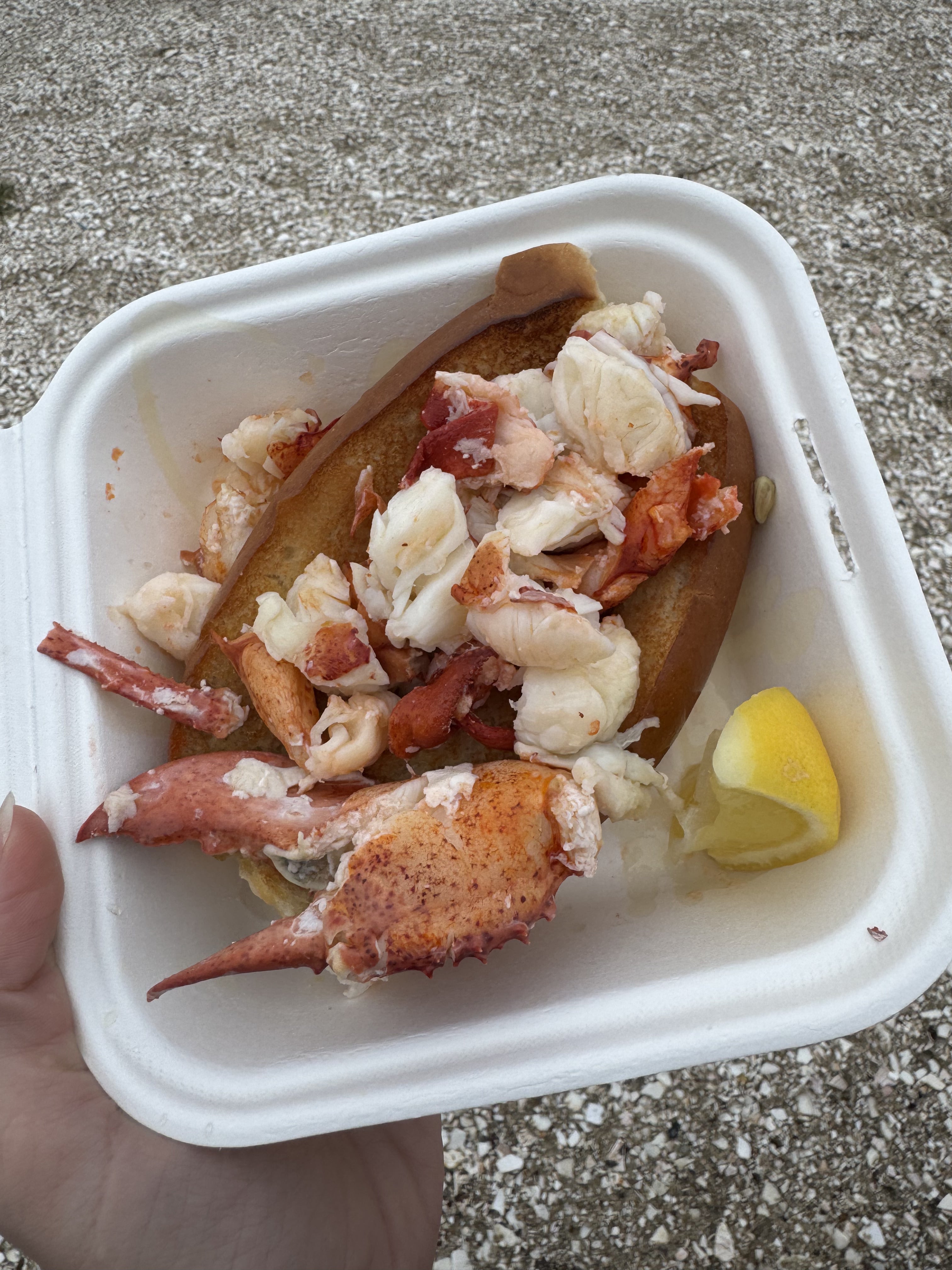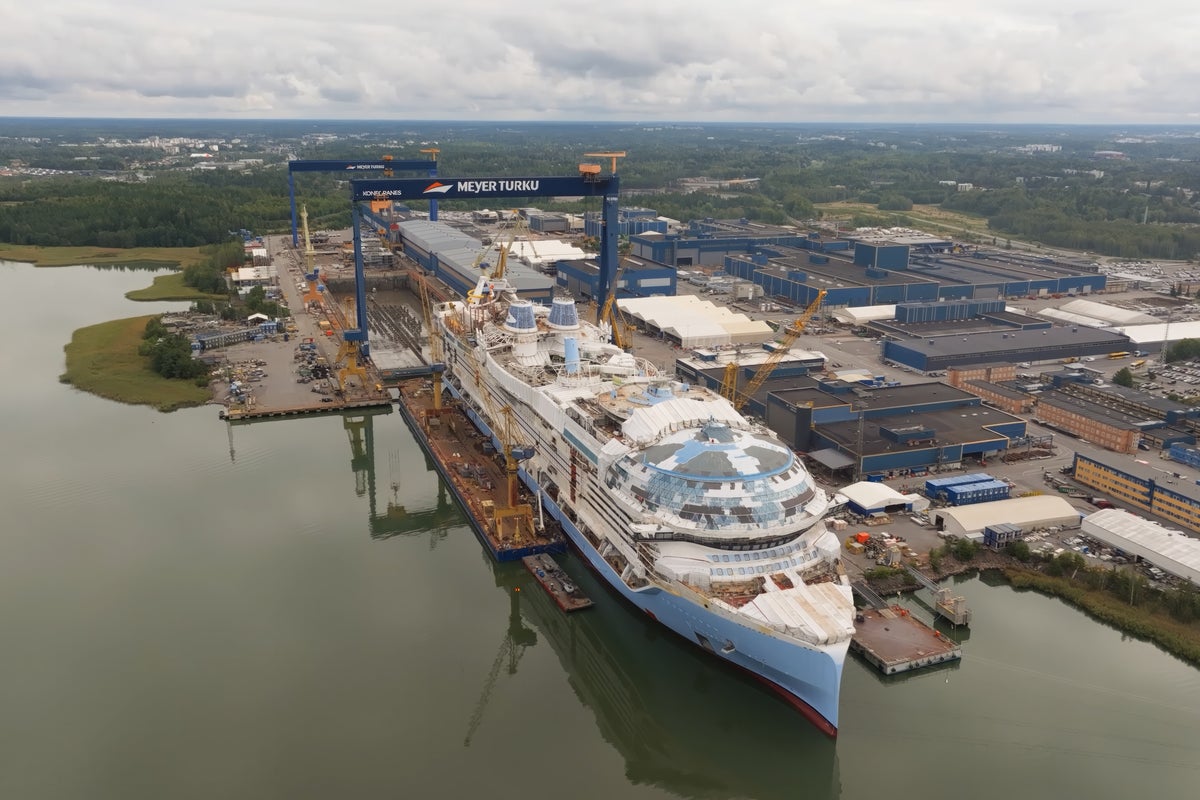“No jumping or diving,” read the sign in large black lettering. Standing on a spot best known as “Jaws Bridge’” I was in absolutely no danger of doing that.
I scanned the sea for that distinctive grey fin. The water was calm, the sky a wonderful icy blue, tinged by a soft afternoon glow. Sadly, there wasn’t a fish in sight.
This was one of several shark-themed stops I made touring Martha’s Vineyard – a picturesque little island off the coast of New England made famous when it transformed into the setting of Steven Spielberg’s 1975 blockbuster hit, Jaws.
With the movie now in its 50th year, I was on a pilgrimage of sorts to visit the top locations in the film, which is being celebrated in full force in June. A whole host of events and activities are underway – from guided film tours and a chance to meet some of the original crew and cast, to a carefully curated Jaws exhibit at Martha’s Vineyard Museum, along with a deep dive masterclass into the film with historian and film scholar Bowdoin Van Riper.

I was told a visit was like stepping into the film’s fictional Amity Island. This is particularly true of Edgartown – one of my first stops – where many of the distinctive seaside buildings from the screen are still standing.
En route, I made an essential stop to buy as much Jaws merchandise as my luggage would allow. Trucker hat, T-shirt, socks, hand towel and an oven mitt successfully purchased (I drew the line at flip flops), I was not only ready to get my tour on, but suitably dressed for the occasion.
I passed through small-town Oak Bluffs, better known for its 300 plus Victorian gingerbread cottages than its links to the film. Still, any Jaws fan would be remiss to skip these pretty pastel-coloured homes.
Built in the 1800s around a Methodist camp meeting ground, they look plucked from the pages of Brothers Grimm’s Hansel and Gretel fairytale. Intricate wooden trims line the cottage balconies like icing on a cake. Each has a cute porch and rocking chair, some with the odd trinket on view in the window. One named “Sweet Chariot” bizarrely displayed a window full of horse medals. But I digress.

No time to waste, I exited Oak Bluffs via Beach Road, a long strip stretching down the coast. I failed at trying to contain my excitement as I crossed over Jaws Bridge for the first time, screaming “Shaaarrk in the pond! Shark, shark!” to my bemused partner.
Originally settled by whaling captains, much of Edgartown’s centre retains its historic architecture. Rustic clapboard homes are now inns, shops or restaurants – and they really do look like the ones in the movie.
I could almost see Roy Scheider’s Chief Brody storming out of the Amity Police Department in a panic, after punching “Shark attack” into a police report minutes earlier – the first real signifier of the horror to come.
Read more: This crowd-free New England town is the perfect alternative to Martha’s Vineyard
From Edgartown, I hopped on the three-minute Chappy Ferry to Chappaquiddick Island. This is the same ferry where Brody and Murray Hamilton’s Mayor Vaughn butt heads over closing the beaches. “You yell ‘shark’ and we’ve got a panic on our hands on the Fourth of July,” said Vaughn as the ferry shuttled them across the water, stopping the conversation dead.
Thankfully, our trip over was far more amiable. A chipper “hey there, friends!” from the ferry crewman, who went on to inform us he’d just seen a bald eagle soaring overhead. Apparently, we missed it by mere minutes.
Aside from Jaws, politicos might recognise Chappaquiddick for its part in US Senator Ted Kennedy’s mired career. In 1969, Kennedy accidentally drove off a narrow bridge on the island, after leaving a party to catch the Chappy Ferry with 28-year-old, Mary Jo Kopechne. After attempting to rescue Kopechne, Kennedy fled the scene. Kopechne sadly died – and Kennedy’s career never completely recovered from the incident.

Despite the tragic backdrop, walking around the area was a peaceful experience and we were lucky enough to be the only people around. Catching sight of a warning – “caution, extremely soft sand” – we parked our car and travelled over the infamous bridge on foot. We headed towards the shoreline via a snaking walkway made from planks of old wood, framed by tufts of American beachgrass sprouting from the sand. This was my idea of New England perfection.
Chappaquiddick is still inhabited by the Wampanoag tribe, who have lived here for at least 10,000 years on a part of the island called Aquinnah (also known as Gay Head). A visit to their cultural centre offers a window into the Wampanoag’s heritage – and, as it happens, puts you just steps from another iconic Jaws scene. Remember the vandalised “Amity Island Welcomes You” sign? Well, the sign isn’t there today, but it’s where shark obsessive oceanographer Hooper (played by the superb Richard Dreyfuss) delivers one of the best lines of the film: “What we are dealing with here is a perfect engine: an eating machine!”

Before calling it a day, I headed to Martha’s Vineyard Museum to meet the team putting together the anniversary celebrations in partnership with the Chamber of Commerce, including Bowdoin “Bow” Van Riper whose Jaws knowledge knew no bounds.
As a child during the summer of 1974 when filming took place, Bow was an extra in the movie. Sadly, his scene didn’t make the final cut, but he proceeded to give me a fascinating breakdown of what makes the movie so iconic.
Read more: The 10 best beaches in the US to visit right now
For instance, did you know the mechanical shark (“Bruce”) kept on breaking down during the movie? This meant Spielberg had to find alternative ways to shoot it, like those yellow barrels they fire into the shark to track it and tire it out. “So instead of creating what’s known in the business as a ‘jump scare’, he had to suggest the shark was out there waiting to eat our heroes instead,” he says.
I also spoke to Laurel Redington, the museum’s director of programming and audience engagement, who had been devising the Jaws programme. Aside from all the classic fanfare you’d expect in celebration of the movie – a special mention to the “Barks & Sharks” dog costume meet-up (please take photos) – she made a more serious point about shark conservation and awareness.

The film led to what marine biologists refer to as the “Jaws effect”, which prompted a spike in shark hunting. Peter Benchley, the author of the book on which the film was based, later became a passionate shark conservationist. “Knowing what I know now, I could never write that book today,” he lamented.
Fortunately, the shark population, including great whites, has increased around Martha’s Vineyard and Cape Cod in the last decade. It’s not an entirely happy-ending, however, as this is linked with warming waters (as well as an increasing seal population), which presents new issues.
Read more: I went on holiday in Kentucky’s Trump towns – here’s why I think you should too
The programme has a strong educational thread running through it that tempers the fear element of the film with the reality: “Great whites actually shy away from humans”. It also hopes to raise awareness of how to be safe in the water, which can be broadly summed up by the rule: if you see a seal, get out of the water.
I ended my tour in Chilmark, a fishing village in Menemsha where Captain Quint’s shack once stood. Though the original set is long gone, the cluster of small harbour buildings still feels like a backdrop to the film.
We sat by the docks with warm, buttered lobster rolls from Menemsha Fish Market, watching a fisherman haul supplies onto a tiny boat headed out to sea. He’s definitely gonna need a bigger boat, I thought.
Getting there
Numerous airlines fly from the UK to Boston, including JetBlue, British Airways and Virgin Atlantic. Flight time is around seven and a half hours. The drive from Boston to Martha’s Vineyard is around two hours and 20 minutes and the ferry over to the island is usually 45 minutes.
Where to stay
Robyn was a guest of Mansion House, which has been in operation since 1794. It’s said to be the hotel that Spielberg’s location scout stayed at when he visited the island – by accident. The story goes that Martha’s Vineyard was not the first choice to film Jaws. A storm actually forced the scout to detour from Nantucket to Martha’s Vineyard, which is when he found the perfect location.
Read more: Boston on a budget: How to cut the cost of a visit to New England’s largest city


